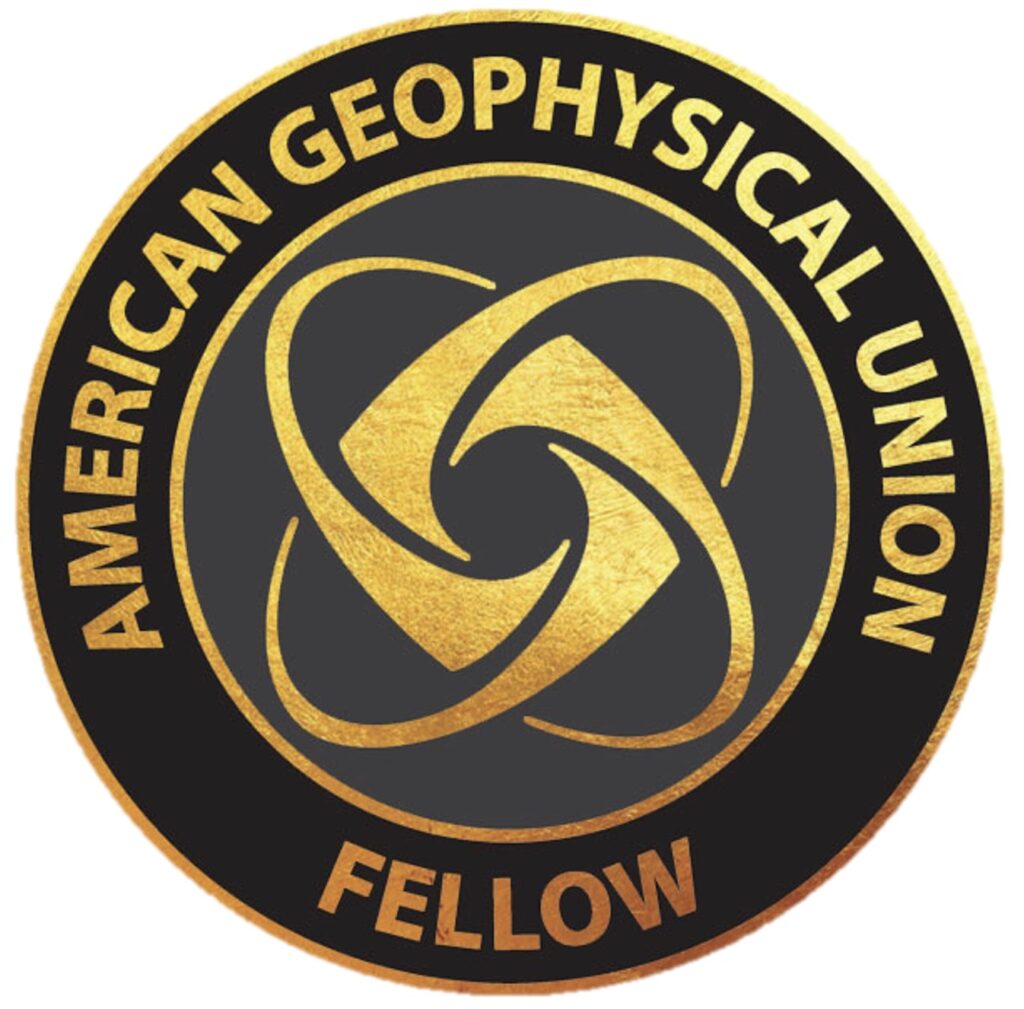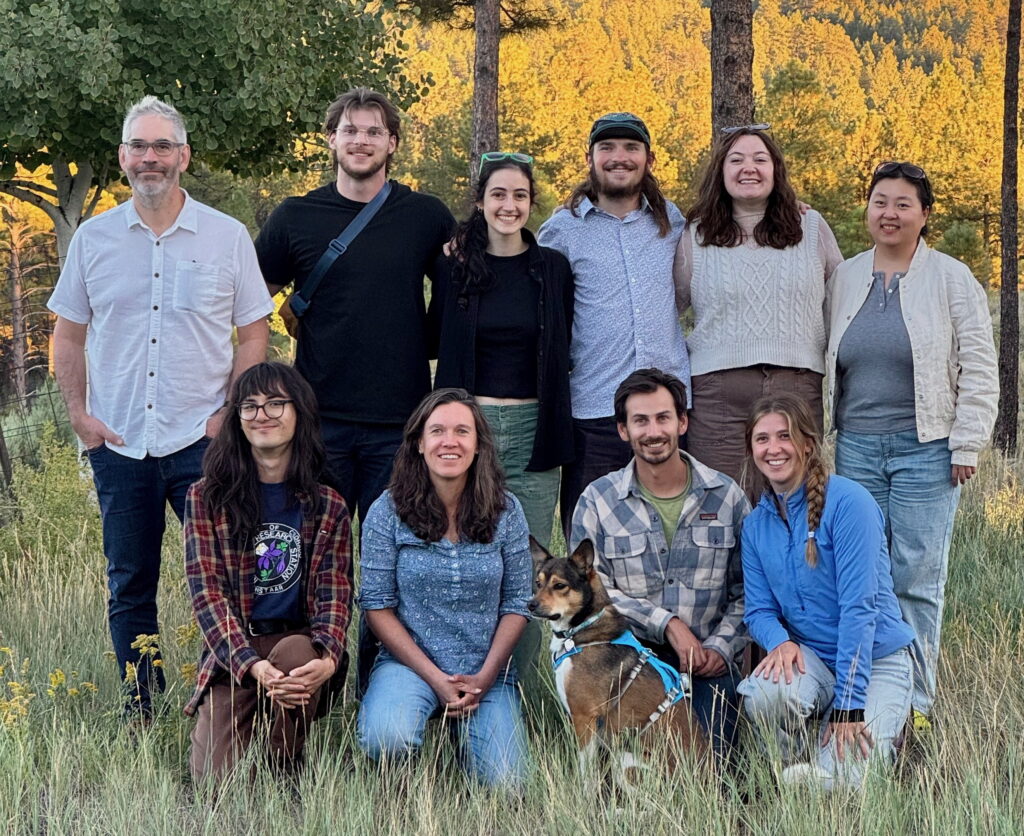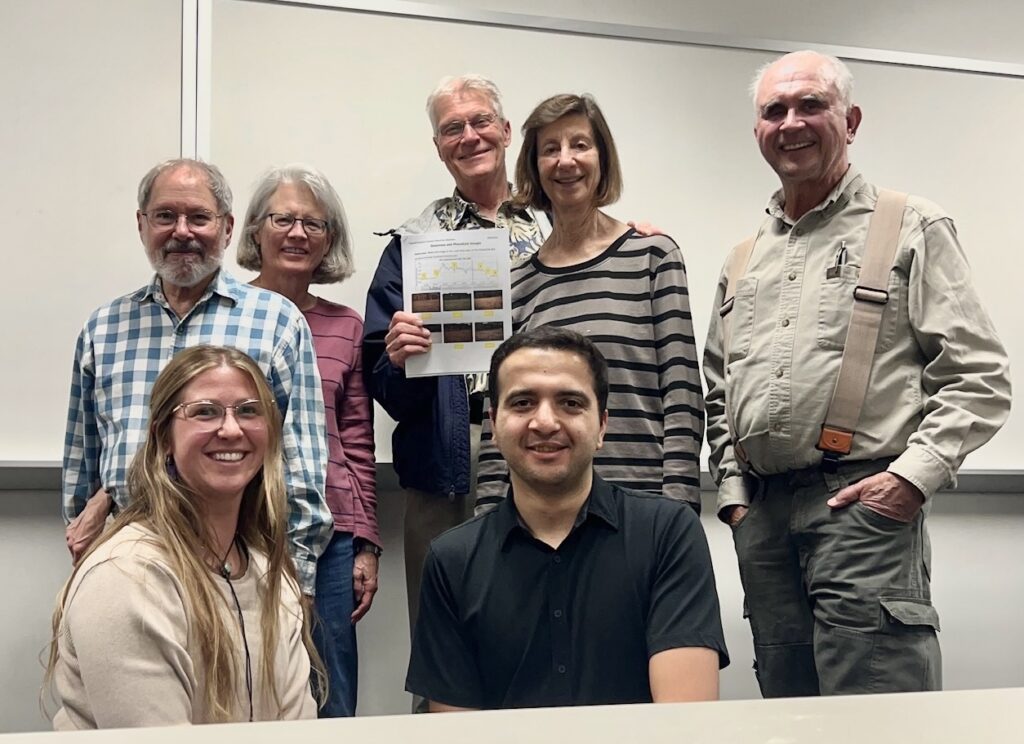Thanks to the support from a still-unknown nomination team, Andrew was one of 9 members of the American Geophysical Union’s Biogeosciences section to be named a 2025 Union Fellow.

Thanks to the support from a still-unknown nomination team, Andrew was one of 9 members of the American Geophysical Union’s Biogeosciences section to be named a 2025 Union Fellow.

It took a few weeks to find a date that worked for most of the lab, which is why it we didn’t have our first social get-together of the semester until week 5! But it was worth the wait, as we were treated to beautiful fall weather when the group gathered at Andrew and Mariah’s on a Wednesday evening in late September. Best wishes to all for the semester ahead!

As part of the 2025 Flagstaff Festival of Science, Mostafa and Darby led a hands-on PhenoCam workshop for the public. The session introduced participants to the PhenoCam Network, how we use PhenoCam data to study ecosystems, and how to navigate the PhenoCam website. We kicked things off with a simple but fun question: What’s your favorite season? To our surprise, almost everyone said spring—whereas at the 2024 workshop, autumn was the runaway winner! From there, participants were engaged from start to finish, repeatedly and enthusiastically jumping in with questions. These questions included what other metadata the PhenoCam Network provides (lots—including site characteristics such as land cover, climate regime, etc.), how many scientific publications have used PhenoCam data (almost 500), what “Gcc” means (green chromatic coordinate), and what kind of extra information near-infrared imagery could offer compared to standard visible-wavelength imagery (leaves absorb most visible light, but reflect most near-infrared light). Following that, participants got to do some investigating of their own, exploring a site they were interested in, following a worksheet that guided participants through the PhenoCam website. The mix of learning, discussion, and hands-on practice made the workshop both fun and rewarding.
All in all, it was another successful and memorable contribution to this year’s Festival of Science. Thank you for your efforts, Darby and Mostafa!
The photo below shows Darby and Mostafa (front row); former NAU Vice President for Research, Bill Grabe (back row, center) participated in the workshop with his wife, Fredericka.

This weekend, Darby (shown below), Perry, and Rosie, an Ecoss undergraduate student, staffed the Ecoss booth at the Festival of Science’s “Science in the Park” event, and it was a hit! Kids and parents got to test their lungs in our “How much CO2 can you blow?” competition using the lab’s Flux Puppy CO2 measurement system. One superstar kid set a record at 39,200 ppm—that’s almost 4%! Through the challenge, they learned how our instruments measure CO2 and other gases, and then guessed which mason jar ecosystem—aquatic or terrestrial—was producing more CO2. Most guessed correctly: the jar with soil from a local ponderosa pine forest was the winner! We also had a station for spying on plants with digital cameras. A poster of PhenoCam images from Bartlett Experimental Forest showed how the forest changes through the seasons, and kids had fun identifying the start, peak, and end of the growing season. The beauty of these seasonal transitions even moved one visitor to tears! Overall, it was another fun, inspiring, and successful event.

NAU’s Advanced Research Computing Group (ARC) hosted an “HPC Day”, complete with a keynote address, workshops, and lightning talks. The event was a great opportunity for lab members to meet up with other members of NAU’s Monsoon HPC, and to meet face-to-face with ARC staff. Yujie gave a presentation in the lightning talks session, “Using HPC for gap-filling ecosystem fluxes”. The event was a huge hit, and thanks to ARC Director and PhenoCam collaborator Chris Coffey for organizing it!
With massive input from the lab, Andrew assembled a short video that emphasizes how PhenoCam imagery can convey the stories of how different ecosystems experience the passing of the seasons. The video will be shown at the Ecoss booth at the Flagstaff Festival of Science event, “Science in the Park.”
Jen’s paper, “Drivers of canopy temperature dynamics across diverse ecosystems”, has been published in Environmental Research Letters. This is the first of Jen’s thesis chapters to be published. Using data from 36 NEON sites across a range of vegetaion types, the paper takes an empirical approach to understanding how different environmental factors interact to drive the gradient between canopy temperature (Tcan) and air temperature (Tair). Incoming shortwave radiation was the dominant driver of daytime ∆T, and within vegetation types, the analysis shows similar sensitivities to all environmental drivers. An important finding is that the maximum Tcan–Tair gradient was well-correlated with vegetation height, which is thought to be related to the correlation between vegetation height and surface roughness, and impacts of roughness on canopy-atmosphere cooling. Congratulations, Jen!
Jen and Andrew are coauthors on a new paper out in PNAS, “Cooling outweighs warming across phenological transitions in the Northern Hemisphere”. Led by collaborator Lin Meng and her student Yizhuo Li at Vanderbilt, the paper shows that vegetation exerts a dominant surface cooling effect during phenological transitions in mid- to high-latitude forests, with amplified cooling under climate warming in many regions. Andrew’s PhenoCam data were used to identify phenological transition dates at 17 AmeriFlux sites, and Jen analyzed long-wave radiation data from those tower sites to develop a land surface temperature dataset used to ground-truth patterns that had been initially identified from satellite remote sensing.
It’s been three years since the last Biennial Conference of Science & Management, but this year the meeting was back and better than ever! Hosted at NAU, the conference focuses work related to the ecosystems of the Colorado Plateau and Southwestern United States. The meeting is attended by resource managers and research scientists whose work specifically focuses on the Southwest’s natural and cultural resources. Darby, Jacob and Mostafa led a workshop on “Using open-source PhenoCam imagery and data to monitor vegetation change in drylands and beyond”, and then Jacob and Mostafa chaired an organized session, “Understanding the Ecological Impacts of Climate Change on Colorado Plateau Drylands Using Field-Based Approaches”. Thanks everyone for your participation in this fantastic event, and especially to our collaborators and friends who made the effort to travel here from Albuquerque, Las Vegas, Los Angeles, and Tucson.
The photo below shows the speakers and audience from the organized session led by Jacob and Mostafa. The session was hugely popular — standing room only!
Congratulations on a highly successful event!

Where should I eat when I am in Flagstaff? Where should I stay? What brewery has the best beer? What are the can’t-miss scenic highlights? Richardson Lab members get these kinds of questions from both short- and long-term visitors to the lab, as well as family and friends who may be just passing through town quickly, or here for a longer vacation.
We therefore decided to compile a guide, “The Richardson Lab’s Guide for Visitors to Flagstaff: Restaurants, Coffeehouses, Bars & Breweries, Things to See & Do, Hotels, and Medical Facilities.” An initial version of the Guide was assembled last summer by Jen for participants in the Great Thermal Bake-off Workshop. Updates and new entries were added this year by Jen, Jacob, Oscar, Yujie, and Darby.
You can download a copy of the guide below, or through the “Information For Visitors” tab under the dropdown Menu at the top of this page.